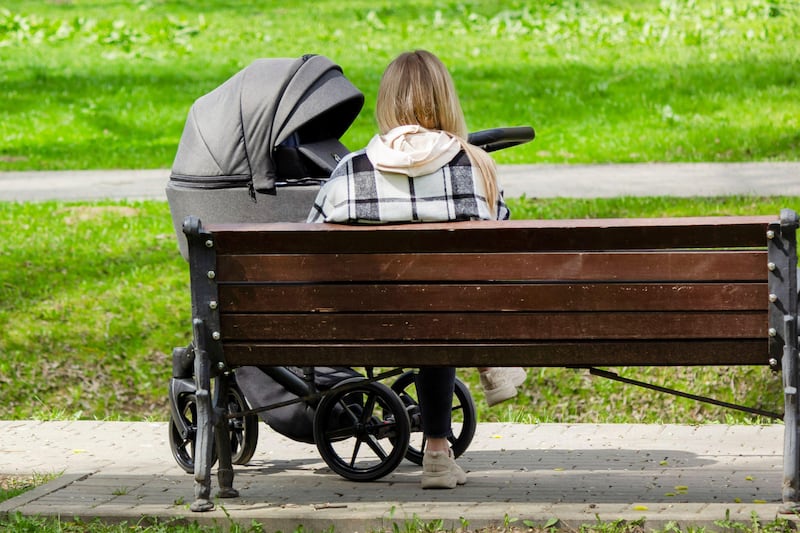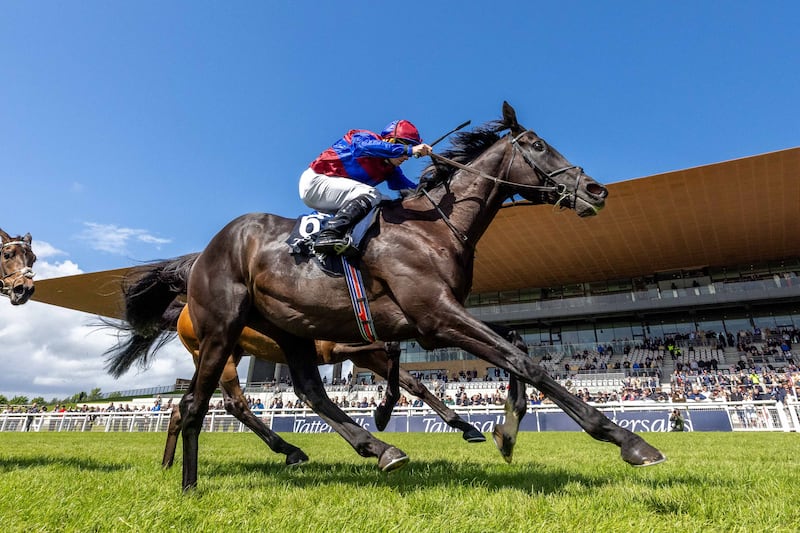Art lovers may be familiar with our national collections at the likes of the Irish Museum of Modern Art and Cork’s Crawford Gallery, but there is another State art collection that adorns walls across Ireland, from Garda stations to historic houses, government offices to public parks. So what is in the Office of Public Works (OPW) art collection, and where can you go and see it?
Loosely split into heritage and contemporary collections, the OPW, which was founded in 1831, has approximately 13,500 items in its care, including furniture, decorative objects, music and poetry, as well as art and sculpture.
“One of the great delights of my early career was when I found a painting in the store,” says Jacquie Moore, OPW head of art management. “It was a royal portrait, and carved into the back of it was VRL. It had been bought for the Vice Regal Lodge (the former name of Áras an Uachtaráin).”
Moore, who has just been awarded the Royal Hibernian Academy’s Gold Medal for her contribution to the arts in Ireland, describes how the collection includes works purchased, inherited by or donated to the State, as well as, since 1978, commissions and purchases through the Per Cent For Art Scheme. From 2020 to 2022, approximately €420,000 was spent on OPW artwork purchases, and €151,470 on heritage art acquisitions.
RM Block
[ First Paul Cézanne painting in Ireland unveiled by National GalleryOpens in new window ]
[ Fifty-one incidents of vandalism and damage at OPW sites last yearOpens in new window ]
These days, there are more than 400 State buildings across Ireland, so, unlike most museum collections, in which only a fraction is on display at any one time, the OPW’s collection is a working collection in that more than 90 per cent of it is out in the world at any time. As this includes Civil Service departments and government agencies, you can’t necessarily just rock up and take a look at your favourites, unless, for example, you happen to have an appointment with the Collector General. Here are some of the more recent collection highlights.
Inside the collection
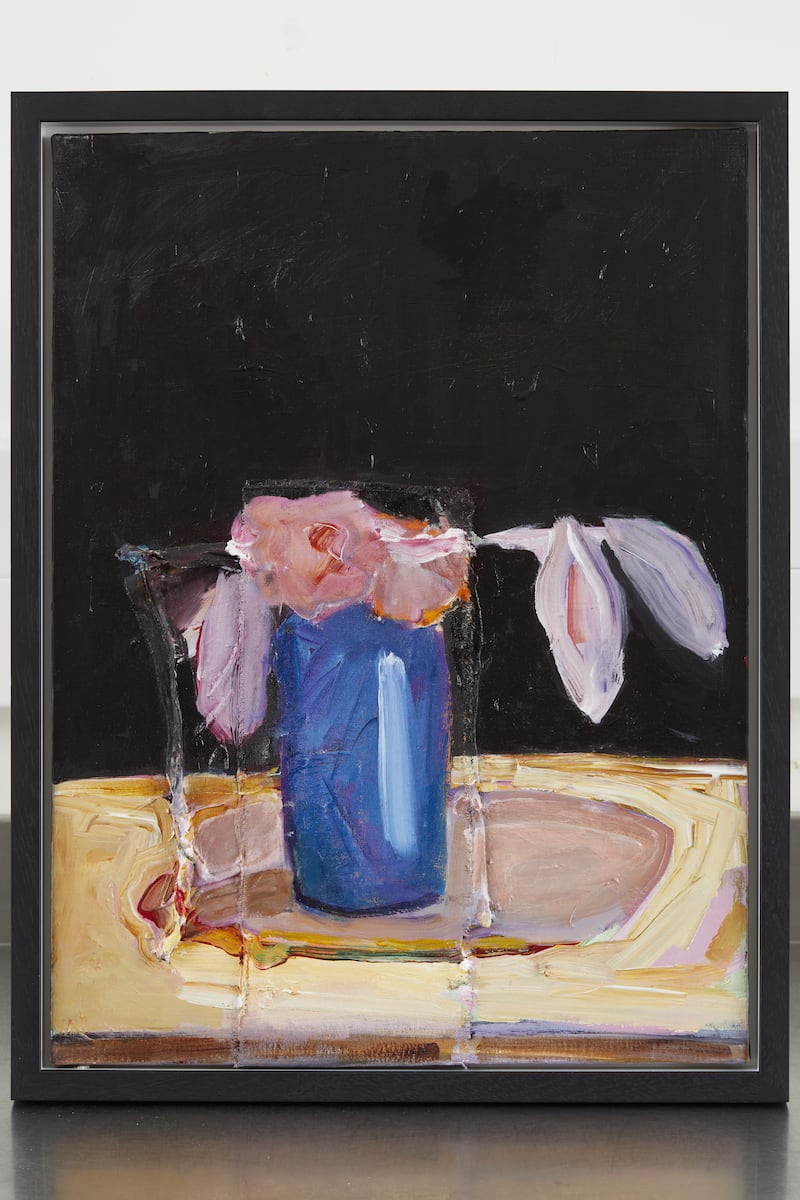
Katherine Boucher Beug, In a Blue Vase, 2018
“That little painting could actually make you cry, it’s so beautiful,” says Moore, who spotted it at the Oliver Sears Gallery in 2020. A regular visitor to exhibitions, art college degree shows and artists’ studios, Moore has an almost encyclopaedic insight into who’s doing what and where. “This is one of those stop-you-in-your-tracks paintings. As a small, intimate still life, it won’t necessarily work in a big modern office, but for a smaller office or older building it’s perfect.”
Gabhann Dunne, He Rode Him Lightly, 2017
“This came from the Molesworth Gallery,” says Moore. “It’s a little oil painting on a panel, and it’s a gem. We had it in our touring exhibition All Creatures Great and Small, and audiences loved it. This is a painting that deserves to be shared with others. It is small in scale, but it holds the space it’s in.”
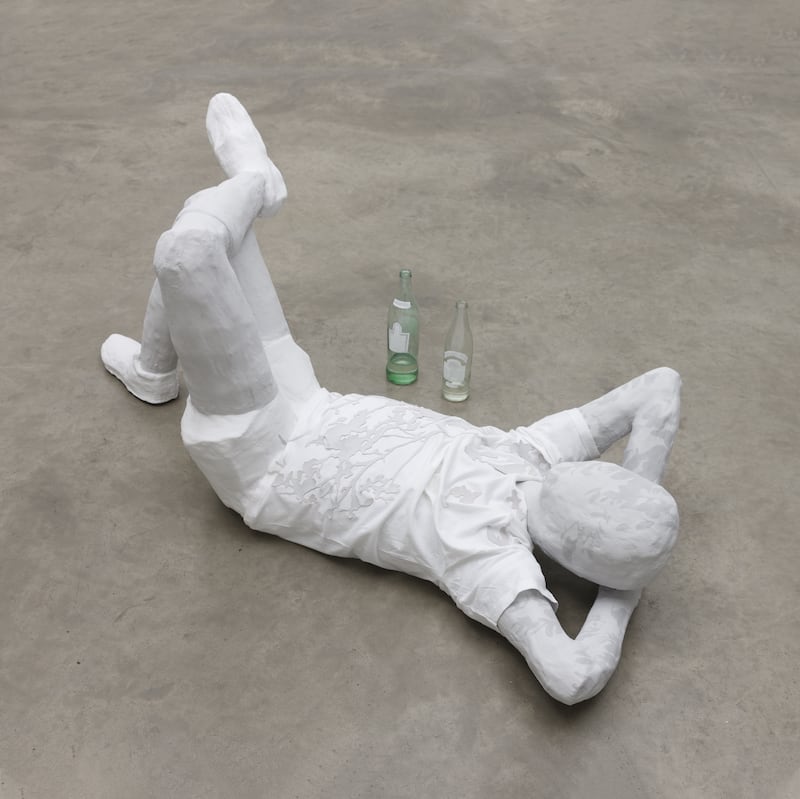
Hannah Fitz, Liar Liar, 2019
“I thought this is a very interesting, exciting work. It was from her first solo show, at the Kerlin. Her technique, the way she dapples the shadows, it’s extraordinary. So I thought: okay, technically it’s going to be difficult to display, but we’ll work that out. And I know people will respond to it. It’s such a fine piece of work. We haven’t placed this yet, but it should be in a good public reception area, where people will pass.”
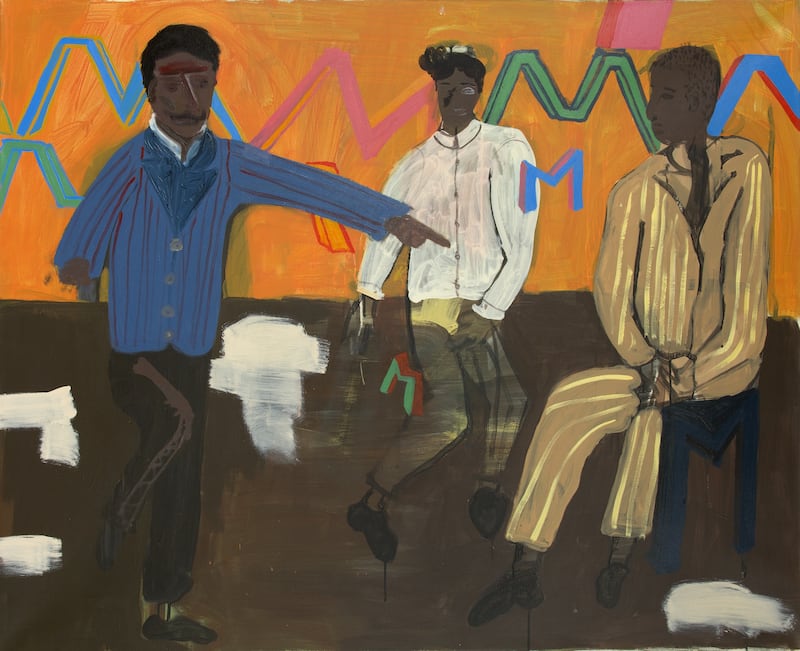
Oscar Fouz Lopez, Mmmm, 2016
“This was brought from a group exhibition at Rua Red. We try to support artists at the beginning of their careers, and artists from different backgrounds. His work is thoughtful but fun, there’s a lot of energy in it. It’s in our store and it’s on reserve for someone. People can come in and select work for their spaces,” says Moore. “It gets interesting when two sets of people want the same thing… We’ll talk them through the work. Often they’ll come in and say ‘we’re looking for artworks that feature Co Carlow,’ or something like that, but then something quite different will catch their eye.”
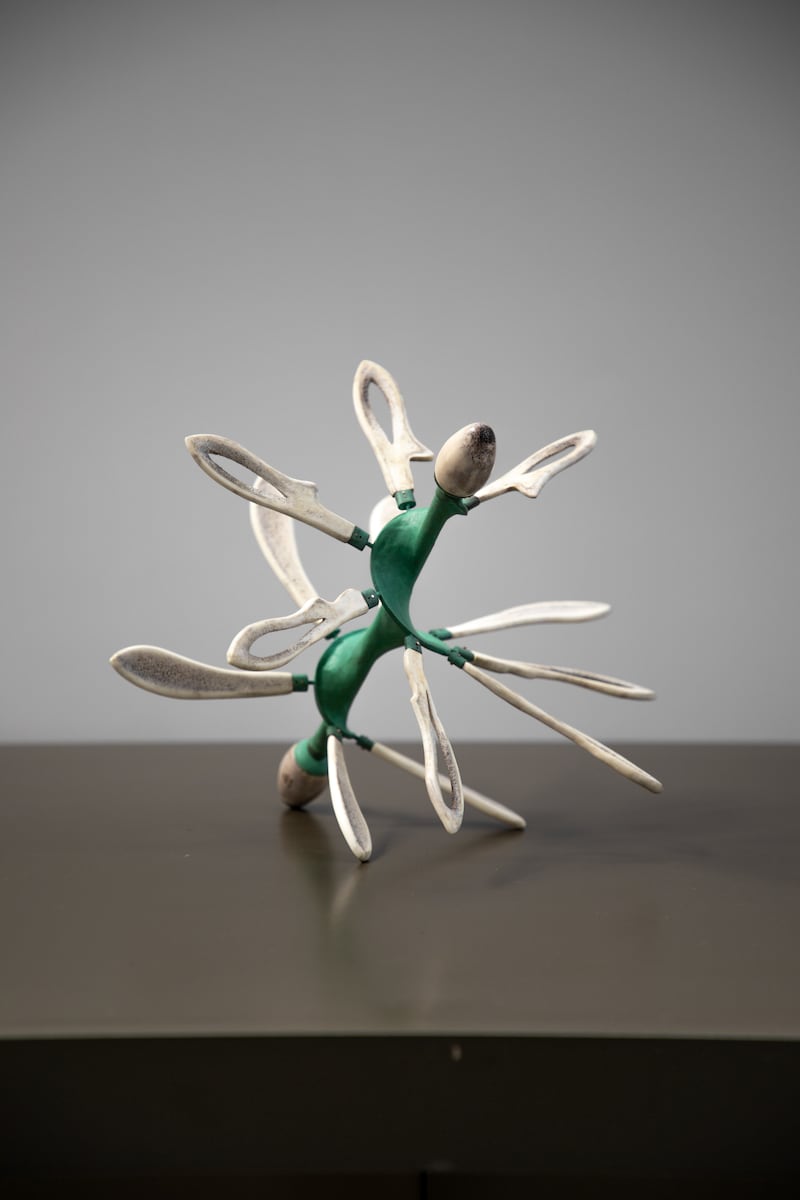
Eva Lynch, Anthropoware II, 2022
Moore was drawn to Lynch’s sculpture as soon as she saw it at NCAD. “Technically it’s really beautiful, but there’s also the whole idea of sustainability. It is made from copper, steel and antlers, and she’s looking at the whole idea of humanity, and nature. It speaks on a lot of levels.” When artworks are placed, a loan agreement also provides background information on the work and the artist, which is particularly vital in a piece where the concept is part of getting to grips with it all.
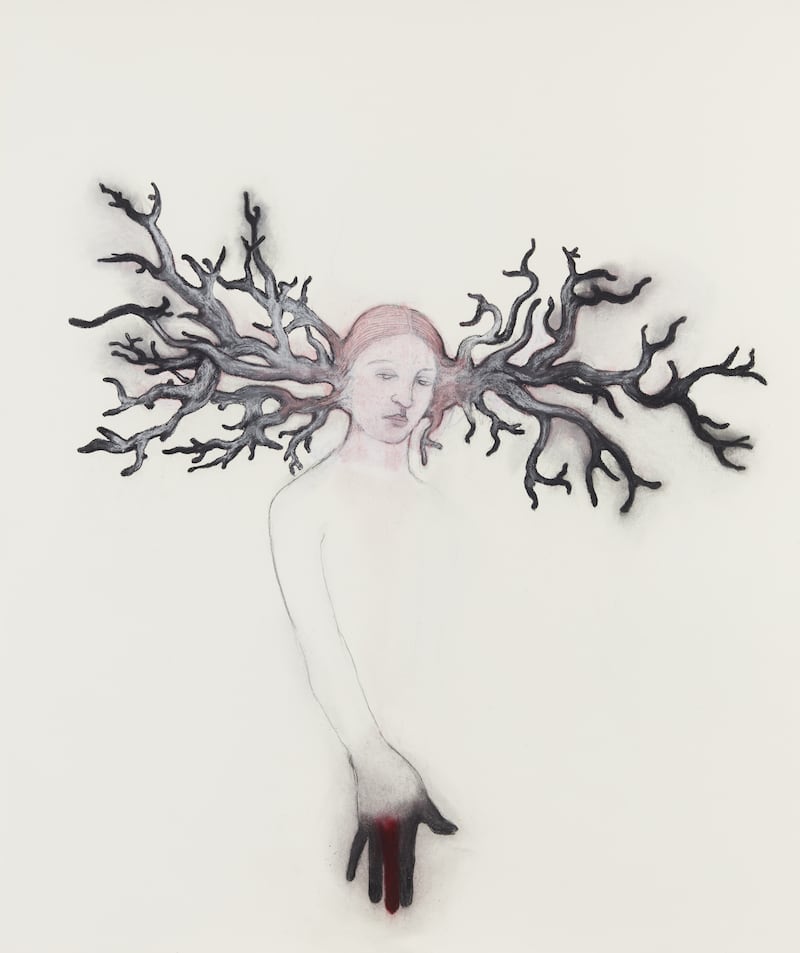
Alice Maher, The Paragon, 2016
Maher’s gorgeously unsettling drawing came from the Kevin Kavanagh gallery, and is in the current OPW touring exhibition. “This work is just so powerful, so beautiful and so strong. I do think there’s a responsibility in putting art in people’s offices and spaces. If it makes them think; if they’re sitting there in a quiet moment, or working on goodness knows what, and if it gives a moment, that matters. Having the opportunity to have an Alice Maher in your space, in your meeting room, that is what it is about.”
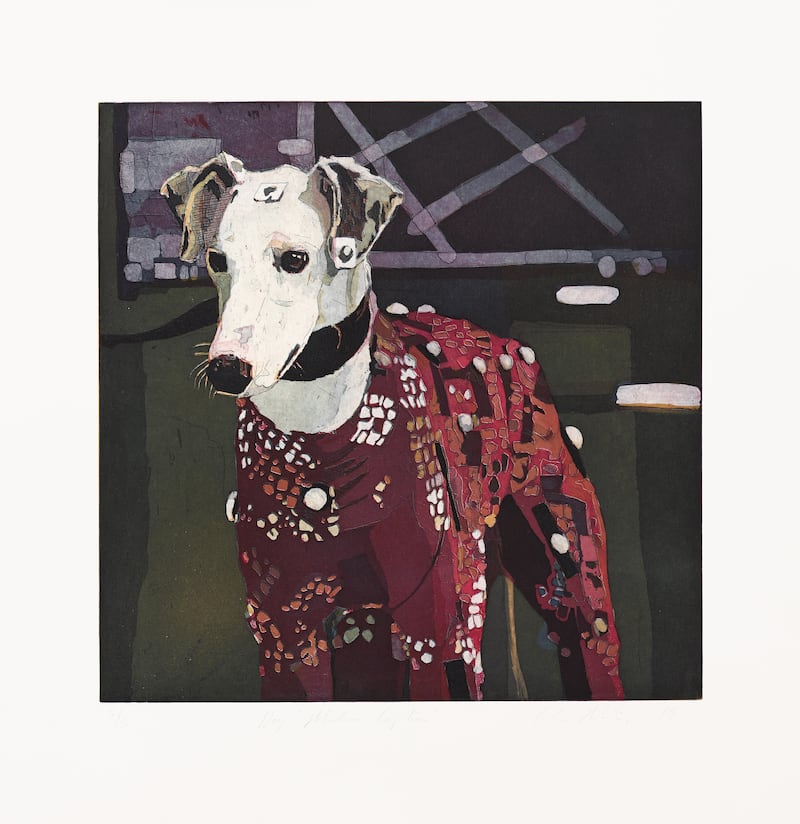
Colin Martin, Dog (Motion Capture), 2019
The OPW has the largest collection of original prints in Ireland. “There’s a really strong body of contemporary print work in the State art collection. And the work of contemporary printmakers in Ireland is just extraordinary.” Colin Martin, who is also head of the RHA School, works in painting and film as well as print, and Moore has noticed that many younger artists are now returning to print. “I have noticed a lot more making, going back to drawing, back to the line, back to ink. When I first started doing this in the 1990s, it was abstraction everywhere, now graduates are coming back to painting portraits and landscapes.”
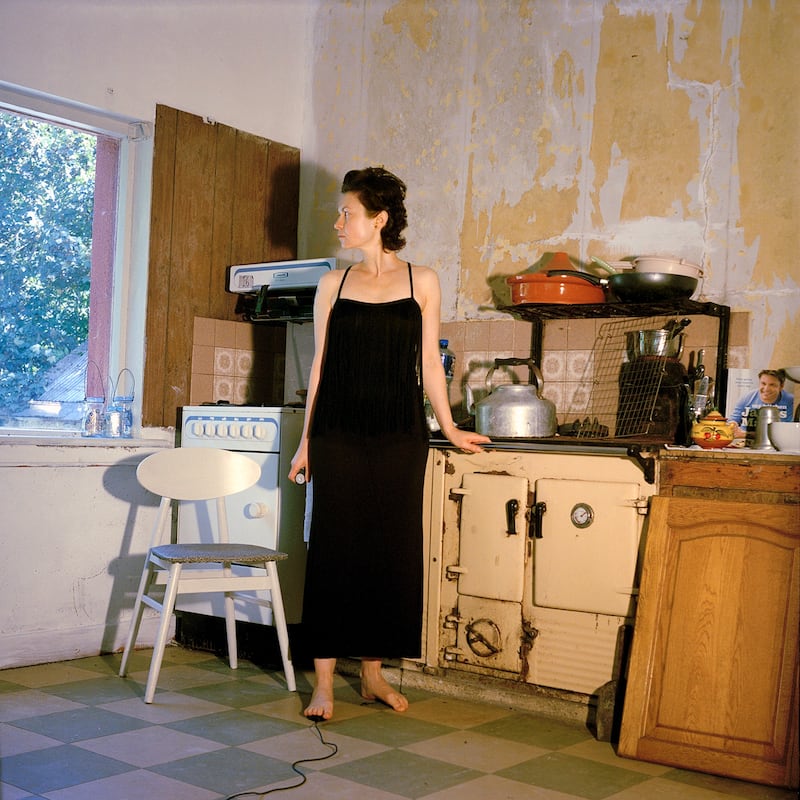
Vera Ryklova, Untitled #1003, 2021
Czech-born Ryklova moved to Ireland in 2007. Her self-portrait is also in the OPW touring exhibition, Person Presence Perception. “We have consciously set out to acquire more photographs. It has just blossomed as an artistic medium,” says Moore. “One of the things we are seeing, as artists from different backgrounds who have come to Ireland, come into our collection, is that it brings different traditions and different energy. It’s exciting.”
[ Work by NCAD artists to adorn taxis in Dublin cityOpens in new window ]
[ NCAD Grad show addresses 'real world problems'Opens in new window ]
The Heritage Collection
While Moore and her team buy from the primary market – that is galleries, studios and direct from artists – the Heritage team, overseen by Mary Heffernan, keep a sharp eye on alerts signalling items of potential interest at upcoming auctions and secondary market sales. There are 5,500 paintings and 500 sculptures currently in the collection.
“If something of huge importance to the State’s patrimony comes up, no one wants to see that run off into another private collection, especially if it can make your visit to one of our castles or great houses a more meaningful experience,” Heffernan says. Two recent acquisitions illustrate the process.
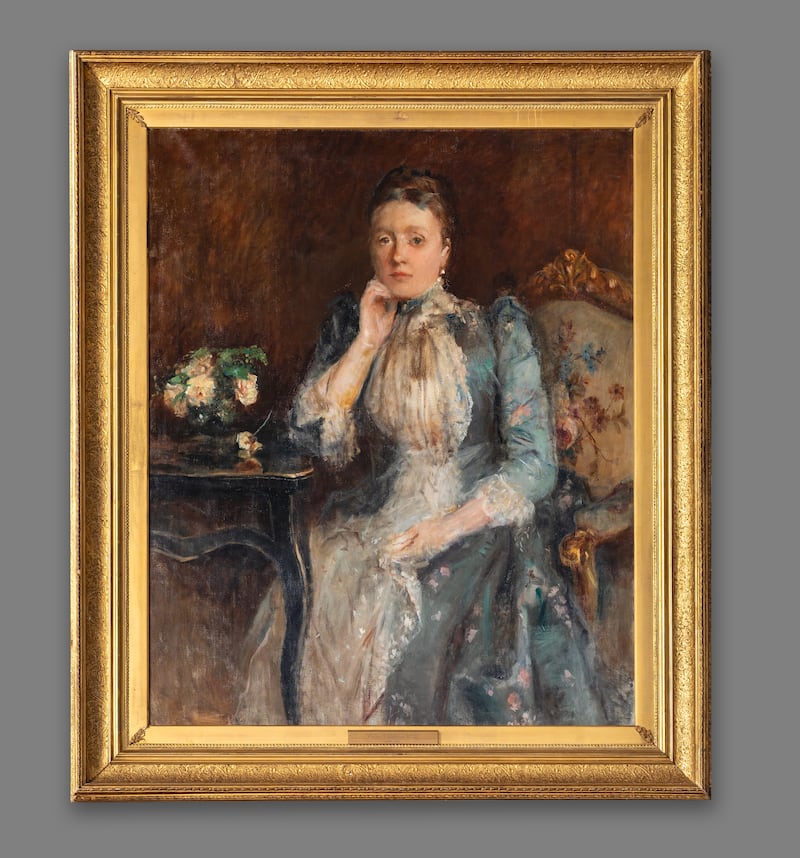
John Butler Yeats (1839-1922), Portrait of Sarah Eliza Conolly
When this portrait came up at auction at DeVeres, it was listed as being of an unknown lady by Walter Osborne. Painstaking detective work included comparing photographs of Sarah Eliza Conolly of Castletown House, unearthing newspaper clippings from the 1890s, and discovering a letter in the National Library by John Butler Yeats verifying the work.
Gearóid Hayes, a scholar of late 19th and early 20th century portraiture, was commissioned to make a report on the painting, and was able to confirm the correct attribution of the painter as John Butler Yeats, and provide documentary evidence of the sitter as being Sarah Eliza.
“In short,” says the OPW’s Sandra Murphy, “this is the story of the repatriation of a painting painted in Castletown, by John Butler Yeats, of a local woman who married into the family of the ‘big house’, which was commissioned by the people of Celbridge to commemorate the coming of age of the next heir to the estate […] and so, is quite a special story,” she says. The painting is on display at Castletown House.
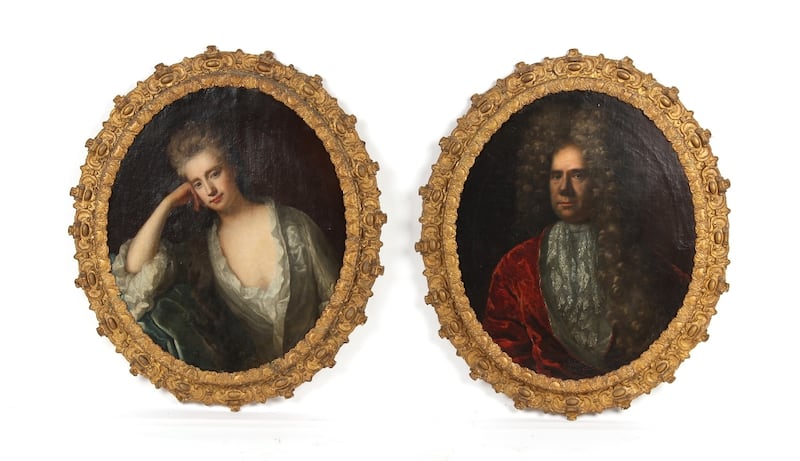
Garret Morphy (c1655-c1716), Portraits of Anne and Joseph Ashbury
“The pair of Ashburys were sold as being by Sir Godfrey Kneller,” says Heffernan. They had been spotted in an auction catalogue from Semley Auctioneers in Dorset. “We consulted with experts in this late 17th-century period and were of the view they were in fact by Garret Morphy.” Morphy has been described as “the first Irish-born artist of any stature”, and the pair have now been attributed as rare Morphys.
Joseph Ashbury himself was a colourful character. He was master of the revels to no fewer than five monarchs, and was also director of Smock Alley Theatre for 45 years. In addition, he was a key figure in the Irish Restoration, having seized Dublin Castle from Cromwellian hands, in his capacity as an army officer in 1659. The portraits are currently undergoing conservation, prior to going on display at Dublin Castle.
Person Presence Perception, the current OPW touring exhibition, is aimed at bringing artworks usually located in government offices and public buildings to a wider audience. Organised in partnership with the Department of Finance, Northern Ireland, it is at the Casino Marino from June 16th until November 2023.




















